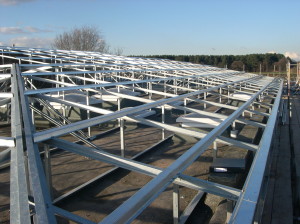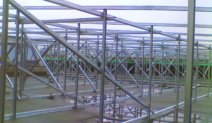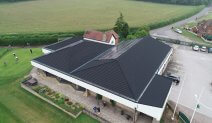Q – What is a Line Load system?
11th February 2014
A – Our Line Load system was created to enable us to provide a cost effective solution to the modular industry, but can also be used in other markets providing the structure underneath is appropriate.
It consists of prefabricated trusses (or frames as they are sometimes called) which are installed on site along a wall or down the line of a module that is able to accommodate the load of both the Dibsa structure and the roof coverings.
I must however point out that not all walls or modules are able to take the load along these points and we always obtain advice from our Structural Engineer and also the manufacturer of the module for suitability and load points.
Our Line Load system does not span and remains in contact with the load bearing structure beneath, hence the name… Line Load.
Interested? – Give us a call on 01226 320920 or send us a message.




